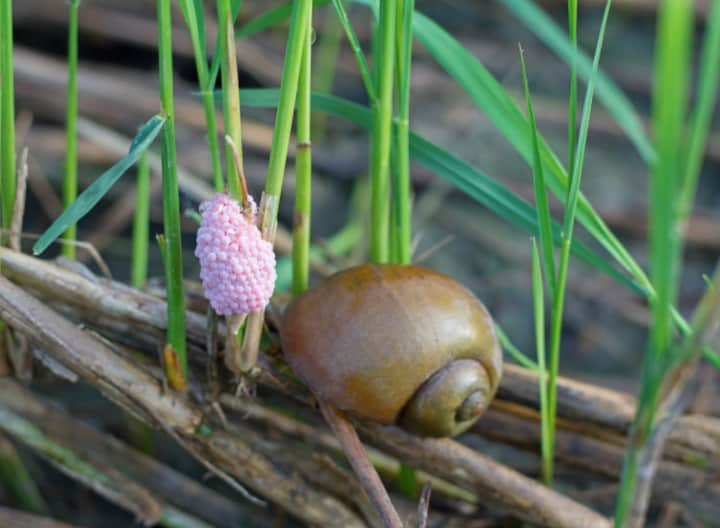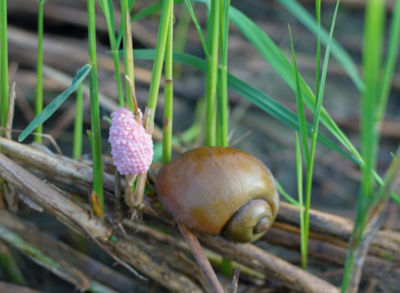Limpkin Numbers Growing in Louisiana
Keith Lusher 05.28.24

As summer approaches anglers across the south are spotting something that has been nonexistent over the colder months of winter – Apple Snails. These snails are relatively new to the Gulf states and were first spotted in Louisiana in 2006. Since then their numbers have grown becoming a common occurrence for anglers who fish the brackish marsh.

Dustin Newcombe of Slidell LA, recently spotted some of the apple snail eggs along some reeds in the marsh. “It’s hard to miss these things in the water and even harder to miss the fluorescent pink eggs that the snails lay,” Newcombe said. The snails have made themselves at home here in Louisiana and it’s taken a toll on the vegetation. In a study in Asia, it’s been determined that these snails feed on young rice plants still submerged in flooded fields. It is possible that their presence in the Louisiana rice fields may result in damaged crops and blocked irrigation pipes. Scientists worry that this could also impact crawfish production in south Louisiana.
While the snails have made themselves at home in the Bayou State, another non-resident has moved in and is feeding on the snails. It’s called a Limpkin. These marsh hens are dark brown in coloration and have been slowly increasing in numbers.

Robert Dobbs is with the LDWF and says that he’s optimistic that the Limpkins that have migrated from Florida will make a difference in thinning out the infestation of Apple Snails in the area. “Right now, there isn’t enough Limpkins to make much of an impact on the apple snail population,’’ said Dobbs. “But if this trend continues and Limpkins really do become established here in Louisiana, it’s possible that they will provide some level of biocontrol.”
Dobbs said he bases his optimism on similar scenarios that have occurred in other states. The pattern seems to be that the apple snails show up and become established and the Limpkins follow approximately 10 years later.

Apple snails first showed up in Louisiana around 2013. Now, about 10 years later, the Limpkin have followed. “We believe the pairs of birds that originally showed up from Florida and have not left,’’ Dobbs said. “There is no evidence that they’re migrating back and forth. It seems that they came and stayed.’’
LDWF warns people should also avoid handling egg clusters as they may contain a neurotoxin that irritates the eyes and skin
To report any apple snails the department recommends contacting the invasive security hotline by phone or email:
ANS Hotline: 225-765-3977
ANS Email: AquaticInvasives@wlf.la.gov

